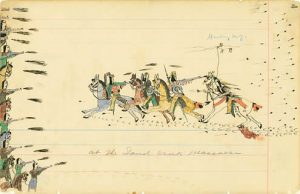Ute Indians Use of Fire as a Defensive Weapon
After Ruxton had been camped near Manitou Springs for two or three weeks, while out hunting one day, he ran across an Indian camp, which startled him very much. No Indians were in sight at the time, but later he got a glimpse of two carrying in a deer which they had killed. The next morning Ruxton concluded that as a matter of safety, he had better remove his camp to some more secluded spot. The following day a fire was started on the side of the mountain to the south of the springs, which rapidly spread in every direction. He … Read more




